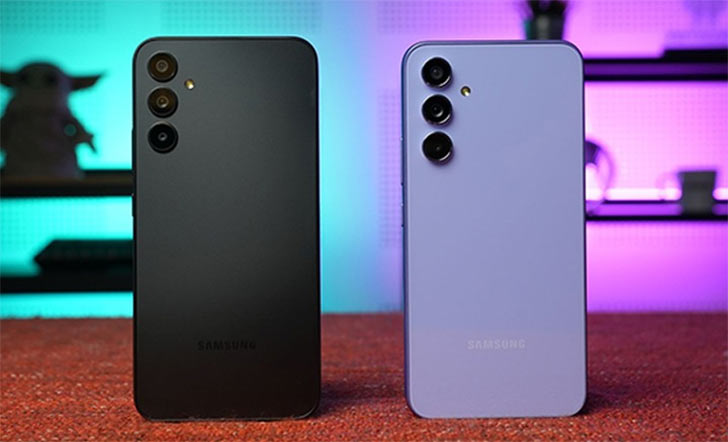Looking at the Samsung Galaxy A54 and Galaxy A34 face-down, they are essentially twins with no visual distinction to tell them apart. They got announced side-by-side last week, crowned as the ultimate members of the Galaxy A family.

With both devices boasting almost similar specifications and delivering a comparable user experience, many wonder what sets the A54 apart from the Galaxy A34. Why go the extra mile to purchase an A54 when the Galaxy A34 does the trick? Here are a few critical differences justifying each device’s cost.
In-hand Feel
Though both newcomers share design and looks, they don’t compare in the province of the in-hand feel. Galaxy A54 uses more premium material for the chassis. While Galaxy A34 uses a plastic back panel, the higher-end A sibling packs a gorilla glass rear panel. It will feel dense in hand due to its exquisite and reinforced build.

Screen Notch
When faced upside, both Samsung 5G latest models are easy to discern. Galaxy A34 has more prominent bezels/chin and an intrusive U-infinity notch. Galaxy A54 has a smaller screen size complemented by uniform bezels and minimal front camera intrusion thanks to that punch-hole cutout.

Haptic Feedback
While Samsung didn’t mention it in its keynote, the haptic engine manufacturer AAC Technologies reports that the Galaxy A54 has an X-Axis haptic feedback motor, endowing it with more tactile vibrations. Galaxy A34 skips out on that feature to trim the cost.

Exclusive Camera Enhancement
There’s no parity between Galaxy A54’s and A34’s cameras. The higher-end sib performs better at night, leveraging 56% larger pixels and Auto Night Camera mode. OIS support is another area where Galaxy A54 shines; its response time to jerks and shakes, AKA VDIS, is 833Hz, while A34 has 500Hz.
Chipsets
SoC is another distinguishing factor between both phones. Galaxy A54 features Samsung’s new Exynos 1380 SoC, while Galaxy A34 draws power from MediaTek Dimensity 1080. In raw processing power, the Exynos chip leads with a better architecture having four supreme Cortex-A78 cores clocked at 2.4GHz. A54 significantly bumps the gaming performance with its 5-core Mali G68 MP5 SoC.





